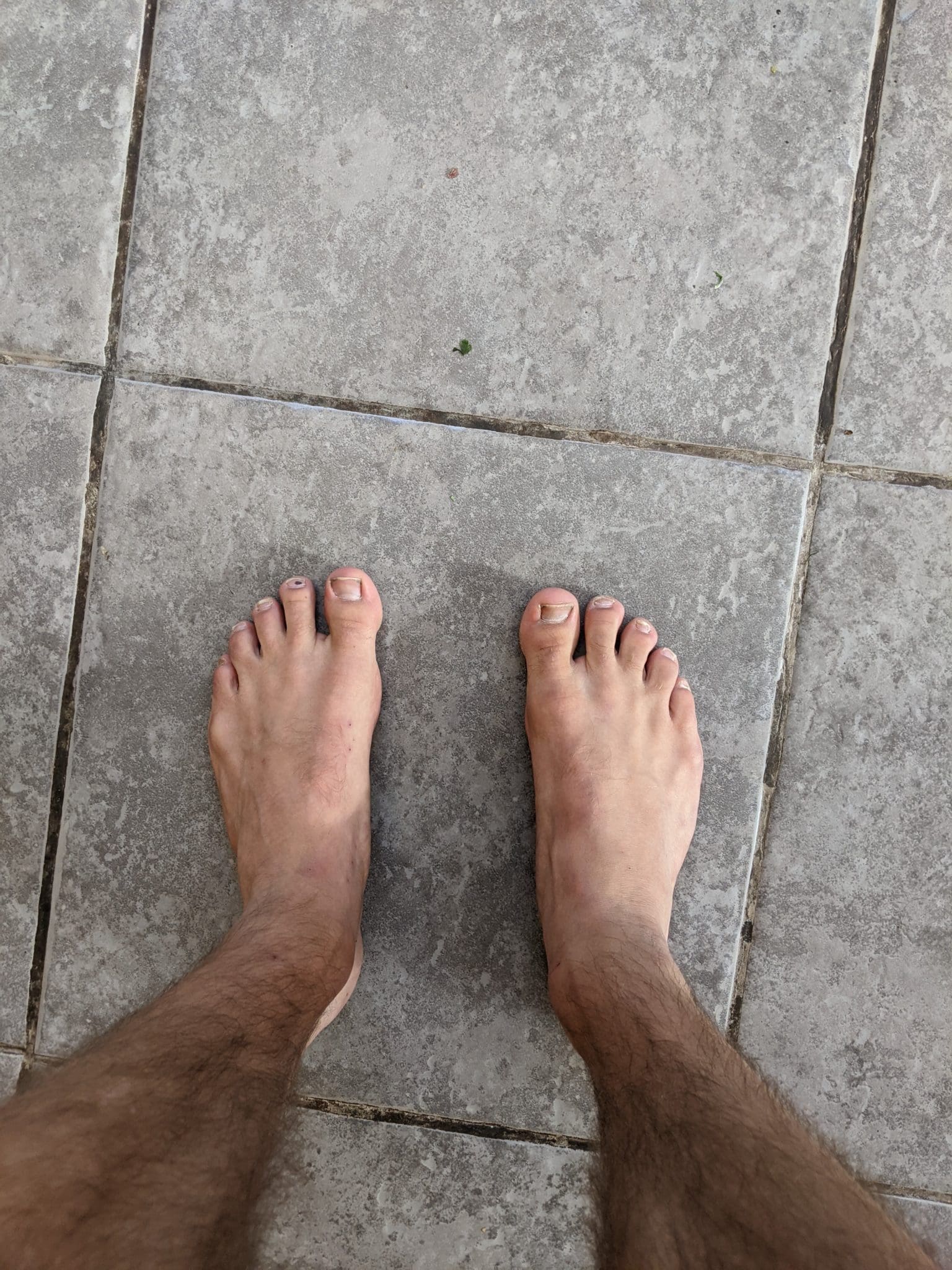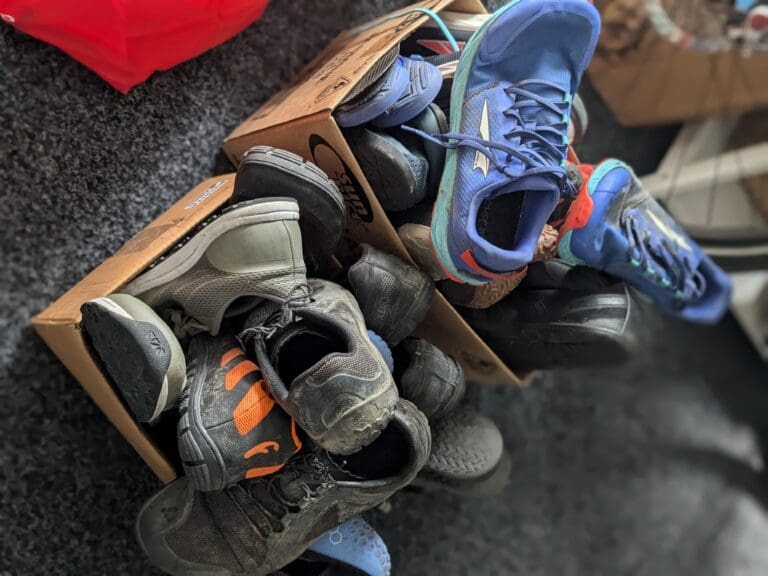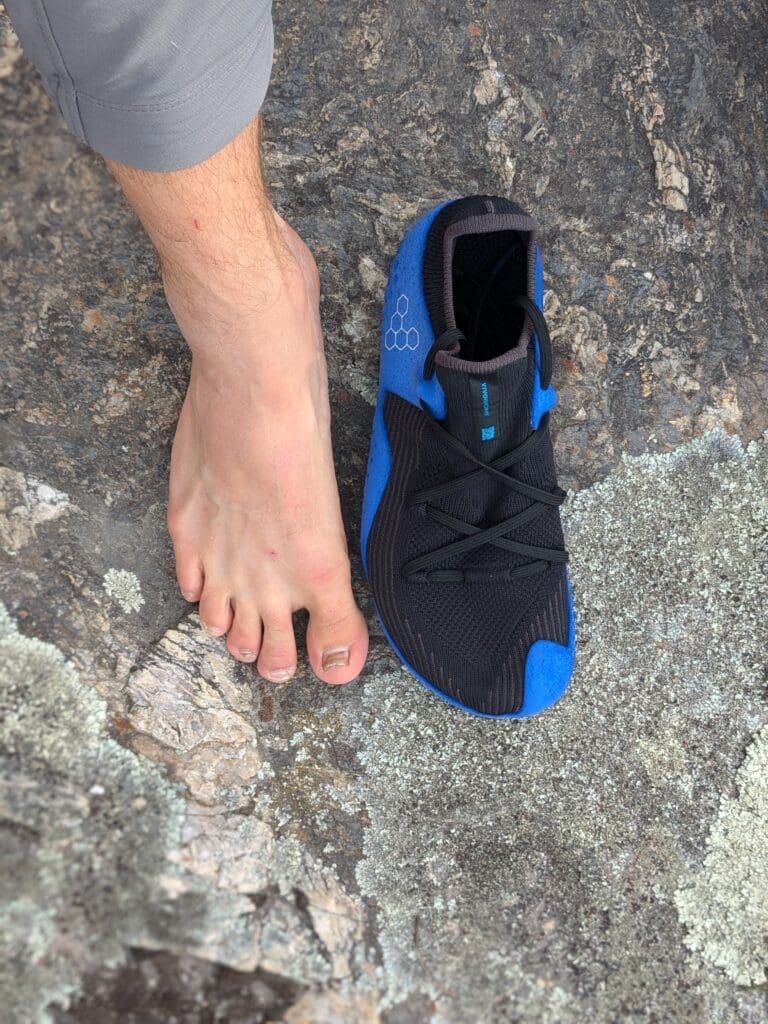When I first read the press release from Nike mentioning they’re launching an “early walker shoe” I was very cynical.
Of course they are; it’s a market they don’t own yet….
But it was only when I continued reading when alarm bells started ringing.
I’m not saying what they’re proposing is terrible. If the child is in an environment where shoes are the safer option, so be it, but most of the time, kids–especially babies– don’t require shoes.
If you’re not sure what I’m talking about…. “The Nike Swoosh 1 Is Designed to Help Our Littlest Athletes Nurture Their First Steps”.

But it’s the following statement that got me stirring.
”Our feet need to bend, flex, grip, and splay in order to develop how they’re naturally intended to.”
I’m hoping you’re thinking the same as me.
That’s such a contradictory message coming from Nike!
Most of their shoes do not bend.
Most of their shoes are high stack.
Most of their shoes have a narrow toe box.
So why is it important for children to experience flexibility and splay, but not adults…. You and I? That makes no sense.
And for that reason, I think Nike knows they’re wrong but has built a brand selling deformed shoes that they’re unwilling to part with lies that made them rich/the market leader.
There’s no 1 simple answer.
What’s more important is the goal of your run/walk/hike and what conditions you will hit.
And this is where the Barefoot Run Review philosophy comes into play.
- Barefoot is a tool to strengthen feet and overall running gait.
- Cushioned shoes can protect you from the elements on rocky terrain.
- Cushioned shoes can help you go faster in race situations (with a minor risk of detraining in the long term)
- Wide toe boxes are essential in any shoe. Full stop.
- Structured shoes/orthotics should only be prescribed in healing situations and should always include a plan to remove such interventions.
Minimal shoes
I use minimal shoes for most of my runs and 100% of the time in my everyday life.
The added benefit of training my feet and lower legs is important to me, and I also love the feeling.
But does that mean you should mostly be in minimal shoes?
I’d argue yes, but you must slowly build up to minimal shoes.
During the first year, there’s a high risk of injury because your body is not used to the extra load on the lower legs and feet. This is the biggest reason why people fail on their barefoot journey!
But it’s worth the effort. Studies show it’s possible to increase foot strength by 60% in 6 months, but only using minimal shoes in everyday life! That’s something we should all unlock for ourselves!
That’s why I put together a plan for those looking to transition into barefoot shoes. I want to share the barefoot benefits with everyone! In an easy, accessible and simple way. It doesn’t have to be complicated.
Checkout “Your Barefoot Journey” – A barefoot training plan geared towards sustainable gains.
Cushioned shoes
I still use cushioned shoes when running! But only in certain situations.
- The terrain is rocky – when there is a higher risk of bruised feet or foot damage
- The goal is speed – Higher stack shoes morph the running gait, which can lead to faster times
- My feet/lower legs are super tired, but I still want to go running – Higher stack shoes morph the running gait, lessening the load on the feet and lower legs.
But there’s one aspect I never leave out.
A wide toe box!
There is no reason for squishing our toes into a pointed-toe box. (Or at least I don’t know of one).
That’s why I only opt for brands with adequate toe boxes (all feet are different; some shoes may work better for you and not others)
For me, that means Altra and, in the future, Topo.
The wider toe boxes allow the toes to splay more evenly, distributing pressure across the foot. It even provides more muscular propulsion! We deserve to have feet that work!
Some models and brands are better than others, so make sure to read my reviews to find out which ones will work best for you!
The bottom line, the words of Nike, our feet are made to “bend, flex, grip, and splay in order to develop”. And that doesn’t stop in childhood. It continues throughout our lives.
For me, that means we should avoid brands like Nike that develop stiff, highly cushioned, and structured shoes and opt for shoes that will benefit our feet mobility and promote longevity.
With some of the examples I’ve given, I hope you’ll be able to make decisions in everyday life to choose the proper footwear for each situation.
And if you’re still confused. Drop me an email! I’m always happy to talk!




Sounds like Nike’s baby footwear designers need to chat with the REST of the footwear designers!
Hi Nick,
Thoughtful article – as always.
Regarding “The goal is speed – Higher stack shoes morph the running gait, which can lead to faster times” – I assume you´re talking about relatively short races where pure speed matters?
Looking forward when you´re writing about Topos. I once owned the ST4 but found it a bit too “spongy” compared to the Prio.
Kind regards Wolfgang